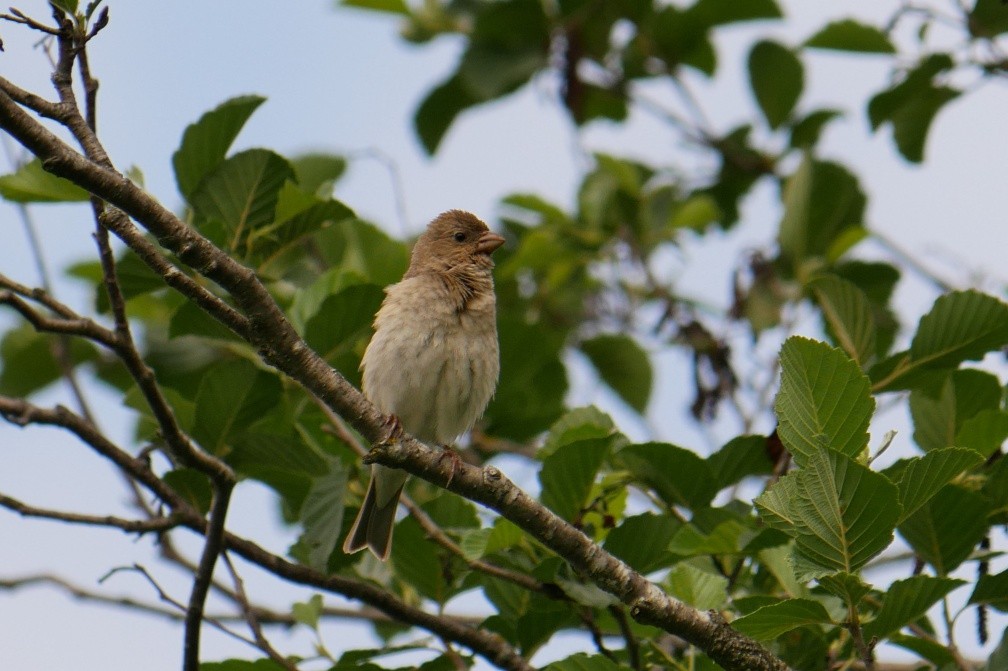Common Rosefinch
A species of Eurasian Rosefinches, Also known as Scarlet Grosbeak Scientific name : Carpodacus erythrinus Genus : Eurasian Rosefinches
Common Rosefinch, A species of Eurasian Rosefinches
Also known as:
Scarlet Grosbeak
Botanical name: Carpodacus erythrinus
Genus: Eurasian Rosefinches
Content
Description People often ask General Info
 Photo By Sgbeer , used under CC-BY-SA-4.0 /Cropped and compressed from original
Photo By Sgbeer , used under CC-BY-SA-4.0 /Cropped and compressed from original Description
The common rosefinch is 13–15 cm (5.1–5.9 in) in length. It has a stout and conical bill. The mature male has brilliant rosy-carmine head, breast and rump; heavy bill; dark brown wings with two indistinct bars, and a white belly. Females and young males are dull-colored with yellowish-brown above, brighter on the rump and greyer on head; buff below. Adults moult in their winter quarters, between September and November. After moulting the red of male is subdued, and becomes brighter during the winter due to wear of the feathers. 
Size
15 cm
Colors
Brown
Red
Gray
White
Life Expectancy
2-3 years
Nest Placement
Shrub
Feeding Habits
Common Rosefinch primarily consumes seeds and insects, supplementing its diet with fresh buds, nectar, and small fruits. It forages with a preference for seeds during the breeding season, demonstrating adaptability in its feeding behaviors to available resources.
Habitat
The common Rosefinch occupies diverse habitats, ranging from lowland to montane forests, woodlands, and scrubs. It breeds in thickets and forest edges, including those dominated by willows, alder, poplar, and tamarisks, as well as riverine thickets, reedbeds, and meadows. Often found near water sources, the common Rosefinch also inhabits orchards and cultivation edges. It adapts to altitudes up to 4550 m, even in urban centers. During the non-breeding season, common Rosefinch descends to plains and foothills, favoring open habitats such as reedbeds and agricultural fields, also frequenting coastal woodlands and scrubs on passage.
Dite type
Granivorous
People often ask
General Info
Feeding Habits
Bird food type
Bird Feeder Type

Small Tube Feeder

Platform
Behavior
The nest is placed low in a bush. The eggs are dark blue with coarse dark brown spots, and a typical clutch contains five eggs. 
Distribution Area
It has spread westward through Europe in recent decades, it has been observed in Portugal, even breeding in England once. Common rosefinches breed from the Danube valley, Sweden, and Siberia to the Bering Sea; the Caucasus, northern Iran and Afghanistan, the western Himalayas, Tibet and China; to Japan between latitudes 25° and 68°. In winter they are found from southern Iran to south-east China India, Burma, and Indochina. It occurs as a vagrant in Sri Lanka. They are found in summer in thickets, woodland and forest edges near rivers and in winter in gardens and orchards, wetlands and locally in dry oak woods. 
Species Status
Not globally threatened.
Scientific Classification
Phylum
Chordates Class
Birds Order
Perching birds Family
Finches Genus
Eurasian Rosefinches Species
Common Rosefinch